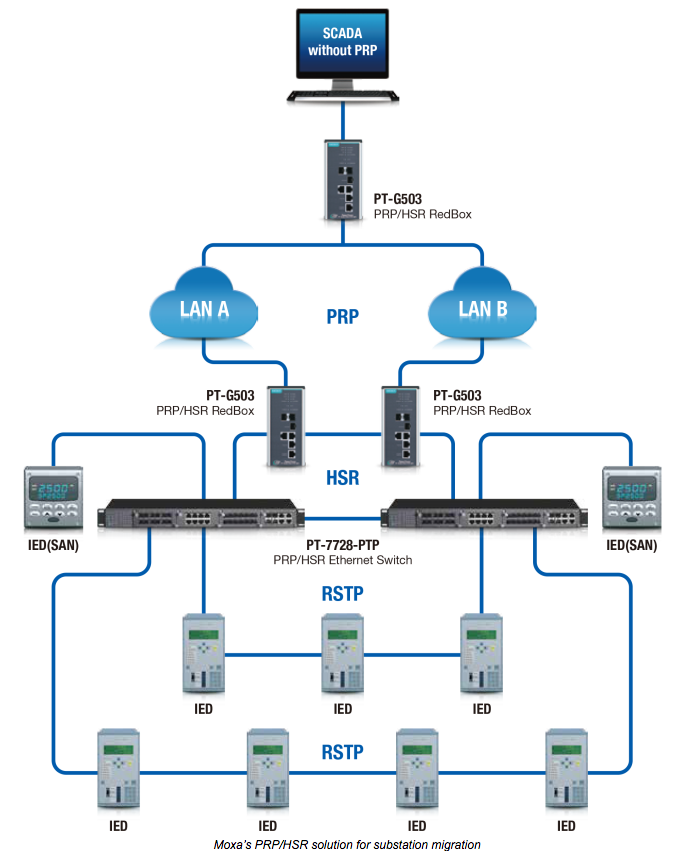A new solution is set to help the large number of substations fitted with legacy devices to migrate to Parallel Redundancy Protocol (PRP) and High-availability Seamless Redundancy (HSR) networks, without the interoperability issues currently giving the industry a hard time. For substations, this cost-effective solution not only brings a stay of execution for their many SANs (single attached nodes) and DANs (dual attached nodes), but also allows them to reap the benefits of a modern automated smart grid substation. In a nutshell, this new solution helps expand the lifespan of these legacy devices and defer replacement costs.
The Search for a Viable Solution
Since the introduction of PRP/HSR-based networks as standards to address the need for reliable industrial communications, many substations have felt as if they were between a rock and hard place. Generally speaking, substations welcome PRP/HSR solutions that bring zero recovery time and versatile topology capabilities to their networks. In the same breath, however, substations want to move forward without getting rid of legacy devices that required substantial investment. Up to now, most solutions to migrate legacy devices to PRP/HSR-based networks have not been as viable and cost-effective as initially hoped for, since most legacy devices support Rapid Spanning Tree Protocol (RSTP), which cannot be read by PRP/HSR-based networks.
In IEC 61850 substation automation, a huge emphasis is placed on redundancy solutions that achieve “zero time” recovery, also known as “bumpless” recovery, with zero-packet loss as the main objective.
Migration to PRP/HSR Networks
With the demand for high-availability and a very short switchover time, the recovery time of commonly used protocols such as RSTP is clearly not acceptable. Although ring coupling methods that integrate the RSTP and PRP/HSR protocols have been available for some time, most substations are still hesitant to embrace PRP/HSR-based networks due to numerous protocol interoperability issues.
A Solution that Fits All
Thanks to Moxa’s newly launched PT-7728-PTP PRP/HSR switch, which supports the IEC 62439-3 edition 3 standard, the interoperability issue is now a thing of the past. Products that support the IEC 62439-3 edition 3 standard must ensure that RSTP-supported IEDs can migrate to PRP/HSR networks seamlessly, without any protocol interoperability issues. In addition, as the world’s first rackmount modular PRP/HSR switch, the PT-7728-PTP provides users with greater setup flexibility.

For more details about Moxa’s new PRP/HSR switch, visit the product page.